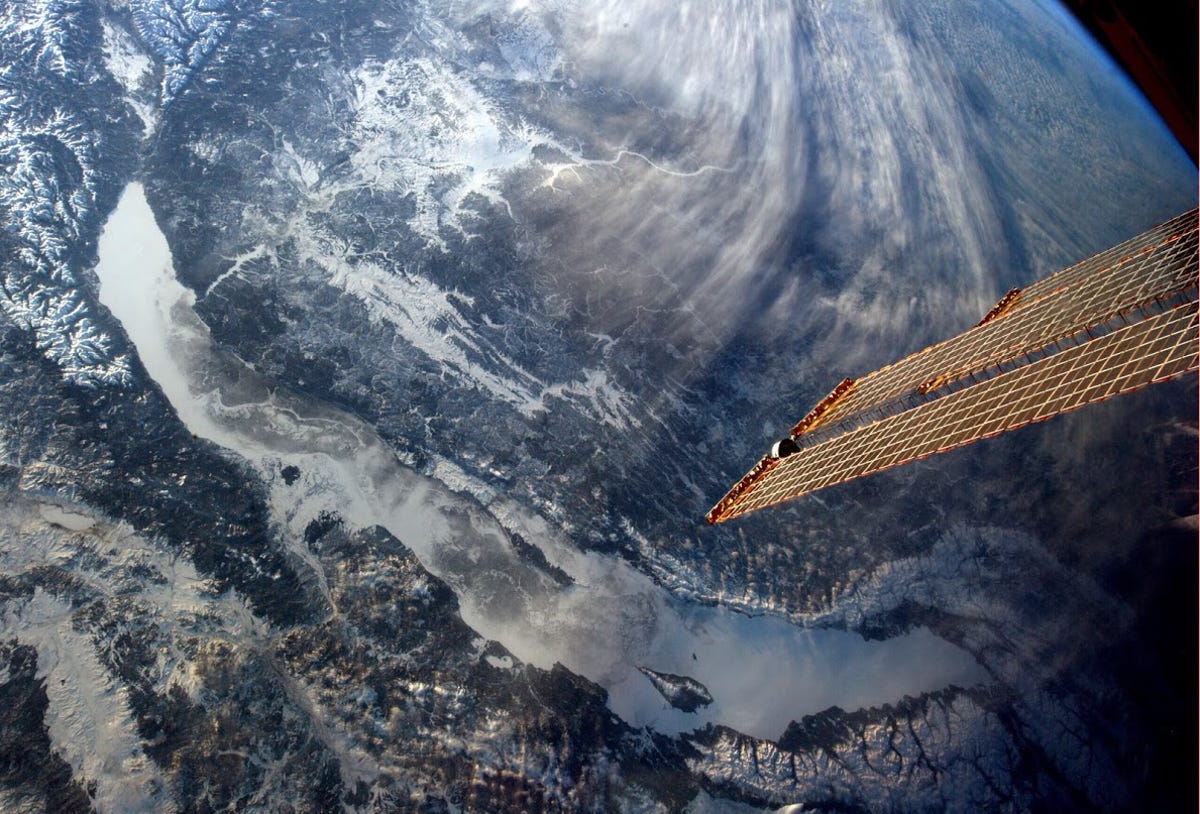Stunning views of Earth from the ISS (pictures)
Astronaut Chris Hadfield shares spectacular views of Earth from more than 200 miles above. Journey from the Amazon basin to New Zealand in our gallery of shots from the newly promoted ISS commander.

Winter at the lake
Today, astronaut Chris Hadfield became the first Canadian commander of the International Space Station. Hadfield came aboard the ISS in mid-December (part of Expedition 34), and relieves NASA Commander Kevin Ford. From high above Earth, Hadfield and his Expedition 35 crew continue to work on various health experiments (PDF), tech tests, and spacewalks.
The Canadian astronaut -- who posts multiple updates a day to Facebook, Twitter, and Google+ -- often shoots and shares amazing dSLR pictures of Earth from the ISS.
In this photo, the solar panels of the ISS provide a techie contrast to this stunning image of Lake Baikal in the Siberia region of Russia. The 5,387-foot deep lake formed around 25 million years ago, which makes it the world's deepest and oldest lake on Earth.
Clouds over the Sahara
Yin and yang
Snow is common to many of Hadfield's photos, but you might be amazed at this capture of a snowstorm's path in the southwestern U.S. It's clearly obvious where the cold weather struck the land -- and where it didn't.
"A natural yin and yang on the prairie," Hadfield said of the shot on his Google+ profile.
Moonrise
Australian Outback
Astounding Amazon
Mount Taranaki
Saskatchewan snowfall
Down Under drips
A line between Egypt and Israel
Vesuvius volcano
San Francisco shimmer
London lights
Capturing a dragon
With assistance from the Canadarm2, the ISS docked with SpaceX's Dragon cargo vehicle on March 3. Hadfield explains how the astronauts control the massive robot appendage that helps maintain the ISS in this informative video:
Photographer at play
For his photography ventures, Hadfield uses Nikon D2XS and D3S dSLRs, as well as a variety of lenses including the 400mm telephoto seen here. The astronaut -- a social-media hound with more than half a million followers on Twitter -- often shares his pictures captured from the Cupola module on the ISS. The small area features seven large windows in a 360-degree orientation. The setup includes 31-inch glass in the middle (the largest ever used in a spacecraft), a perfect place for snapping a spectacular shot.
Hadfield returns to Earth on May 14.

